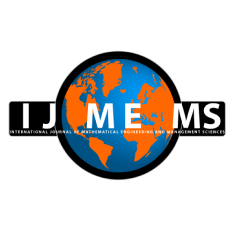Tatyana Maltseva
Department of Structural Mechanics, Industrial University of Tyumen, Tyumen, Russian Federation.
Yury Klochkov
Department of Structural Mechanics, Industrial University of Tyumen, Tyumen, Russian Federation.
Tatyana Saltanova
School of Computer Science, Tyumen State University, Tyumen, Russian Federation.
Alexander Shusharin
Department of Structural Mechanics, Industrial University of Tyumen, Tyumen, Russian Federation.
DOI https://doi.org/10.33889/IJMEMS.2025.10.5.062
Abstract
This paper considers a linear system of partial differential equations (PDEs) to describe the stress-strain state of a two-phase body under static load, such as water-saturated soil. It investigates the basic properties of a new general differential operator Lame. The equations differ from the classical Lame equations by including first derivatives, which account for the influence of pore water on soil mineral particles. The properties of the generalized Lamé operator are investigated for the application of variational methods to solve the problem. It also describes alternative of the Betti and Clapeyron formulas using strain energy results. The calculus of variations of the Galerkin method is used to solve the minimum functional problem. Properties of bilinear forms are established and a theorem on the existence and uniqueness of the solution of the two-phase equilibrium problem is proved. The finite element method is adapted for a kinematic model that considers excess residual pore pressures. A new stiffness matrix is obtained, which is the sum of two matrices: one for the soil skeleton and one for pore water. The adequacy of the mathematical model of a water-saturated foundation for a natural experiment is shown. The use of Korn's inequality implies limitations on elastic properties (homogeneity, anisotropy) and the geometry of the region (requiring regularity and smooth boundaries). The study illustrates that the methodology of mechanics of a deformable solid can be adapted with appropriate modifications to a two-phase body in a stabilized state. The finite element method is adapted for a kinematic model that considers excess residual pore pressures. A new stiffness matrix is obtained, which is the sum of two matrices: one for the soil skeleton and one for pore water. The finite element method is tested on the Flamand problem. The adequacy of the mathematical model of a water-saturated foundation for a full-scale experiment is shown. The problem of the action of distributed load on a water-saturated heterogeneous foundation was solved using the finite element method and the results were compared with experimental data. The effect of mesh partitioning on the accuracy of the numerical solution is also studied in the finite element method. The maximum discrepancy was no more than 26%.
Keywords- Generalized Lame system of equations, Asymmetric positive definite operator, Variational problem, Energy functional, Existence and uniqueness of solution.
Citation
Maltseva, T., Klochkov, Y., Saltanova, T., & Shusharin, A. (2025). Approximation of the Generalized Lame Equations by the Strain Energy Functional. International Journal of Mathematical, Engineering and Management Sciences, 10(5), 1301-1323. https://doi.org/10.33889/IJMEMS.2025.10.5.062.



